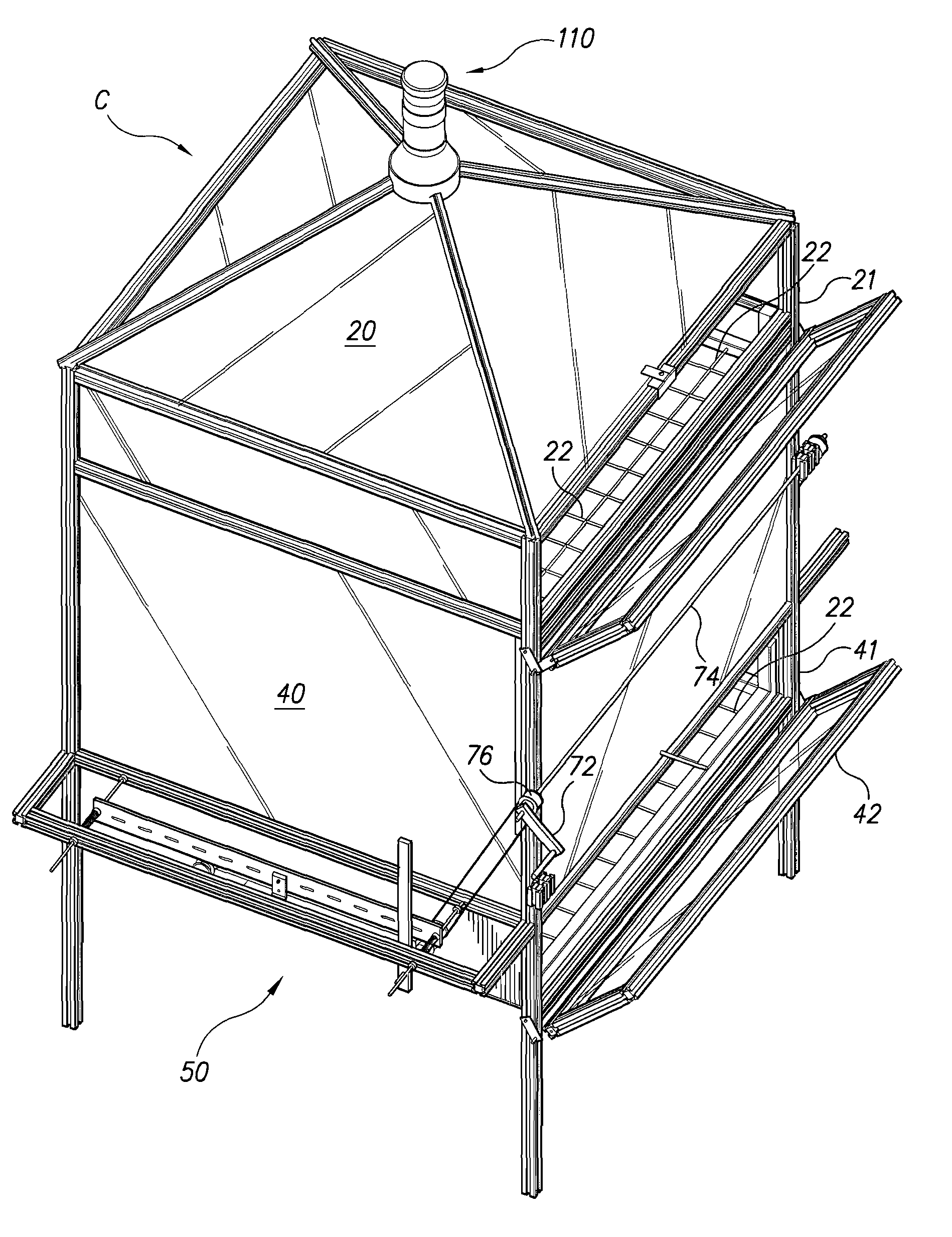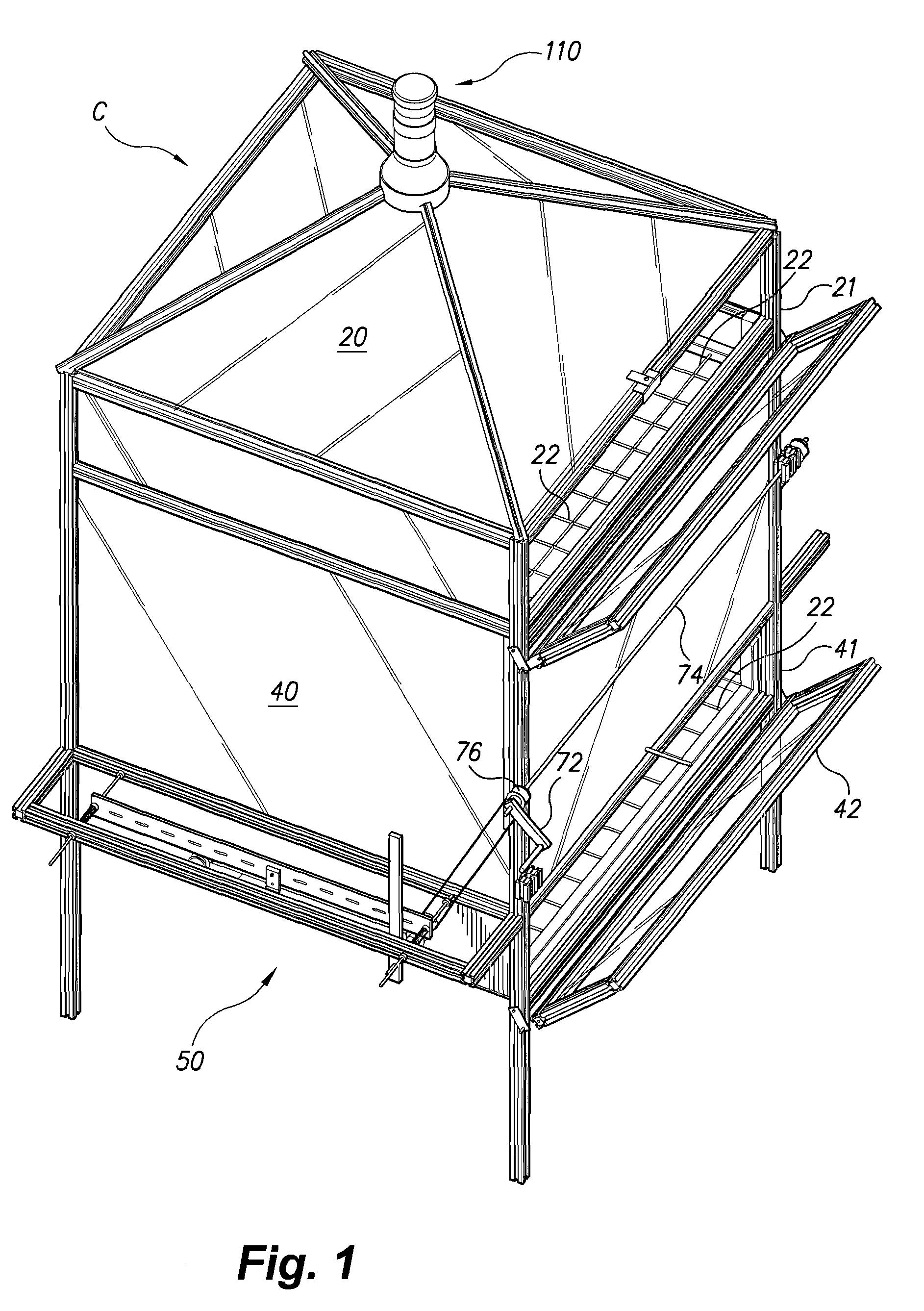System and method for production of predatory mites
a technology of mites and production methods, applied in the field of system and method of continuously producing predatory mites, can solve the problems of spidermites being particularly damaging to plants, killing the host plant, and millions of dollars in damage per year to a wide variety of plant types
- Summary
- Abstract
- Description
- Claims
- Application Information
AI Technical Summary
Problems solved by technology
Method used
Image
Examples
Embodiment Construction
[0017]The present invention comprises a system and method for continuously producing predatory mites. As generally shown in FIG. 1, the system comprises a translucent enclosed housing C with an upper portion 20 and a lower portion 40. The lower portion 40 includes an upper access means 21, a lower access means 41 and a tray transfer assembly 50. A collection apparatus 110 is connected to the upper portion 20 of the housing C.
[0018]In the preferred embodiment, the enclosed housing comprises a “cage” C, and the upper and lower access means comprise upper 21 and lower 41“windows”. The cage C holds multiple stackable trays 22 of the type best shown in FIG. 2. As shown in FIG. 3, at the beginning of the predatory mite production process, vegetation infested with spidermites is deposited on the first tray 22 and placed in the cage C through the upper window 21. FIG. 3 shows the sides of the cage C as transparent so that the tray stack within the cage C is visible. Predatory mites are depo...
PUM
 Login to View More
Login to View More Abstract
Description
Claims
Application Information
 Login to View More
Login to View More - R&D
- Intellectual Property
- Life Sciences
- Materials
- Tech Scout
- Unparalleled Data Quality
- Higher Quality Content
- 60% Fewer Hallucinations
Browse by: Latest US Patents, China's latest patents, Technical Efficacy Thesaurus, Application Domain, Technology Topic, Popular Technical Reports.
© 2025 PatSnap. All rights reserved.Legal|Privacy policy|Modern Slavery Act Transparency Statement|Sitemap|About US| Contact US: help@patsnap.com



